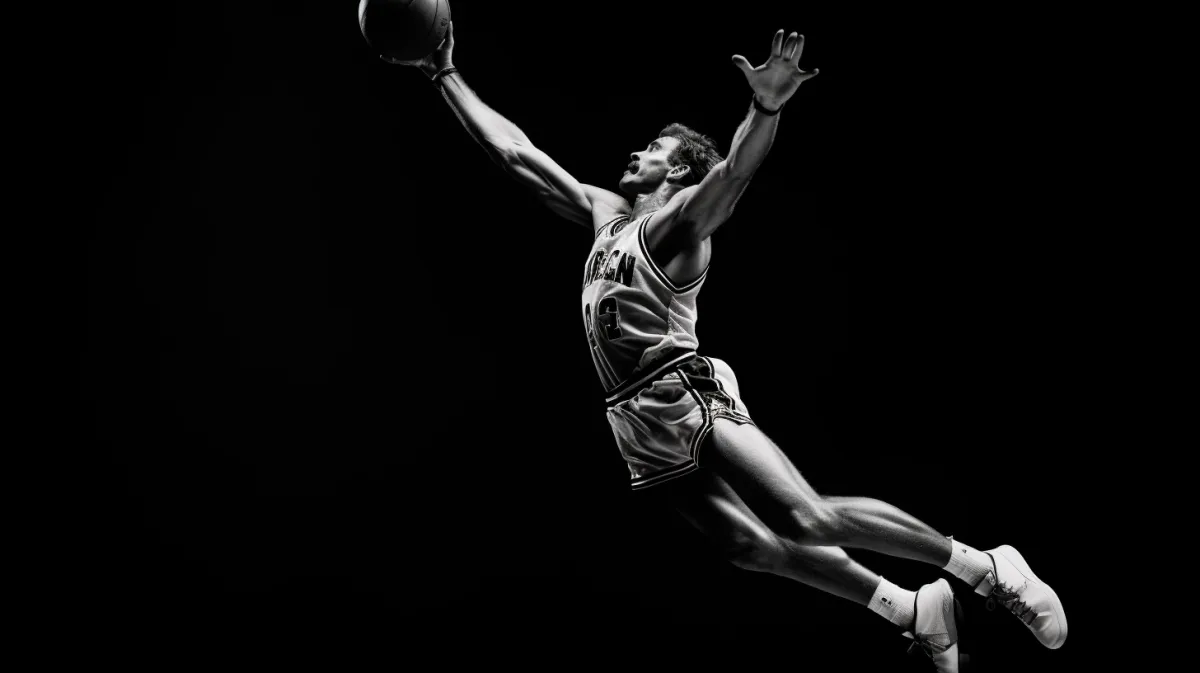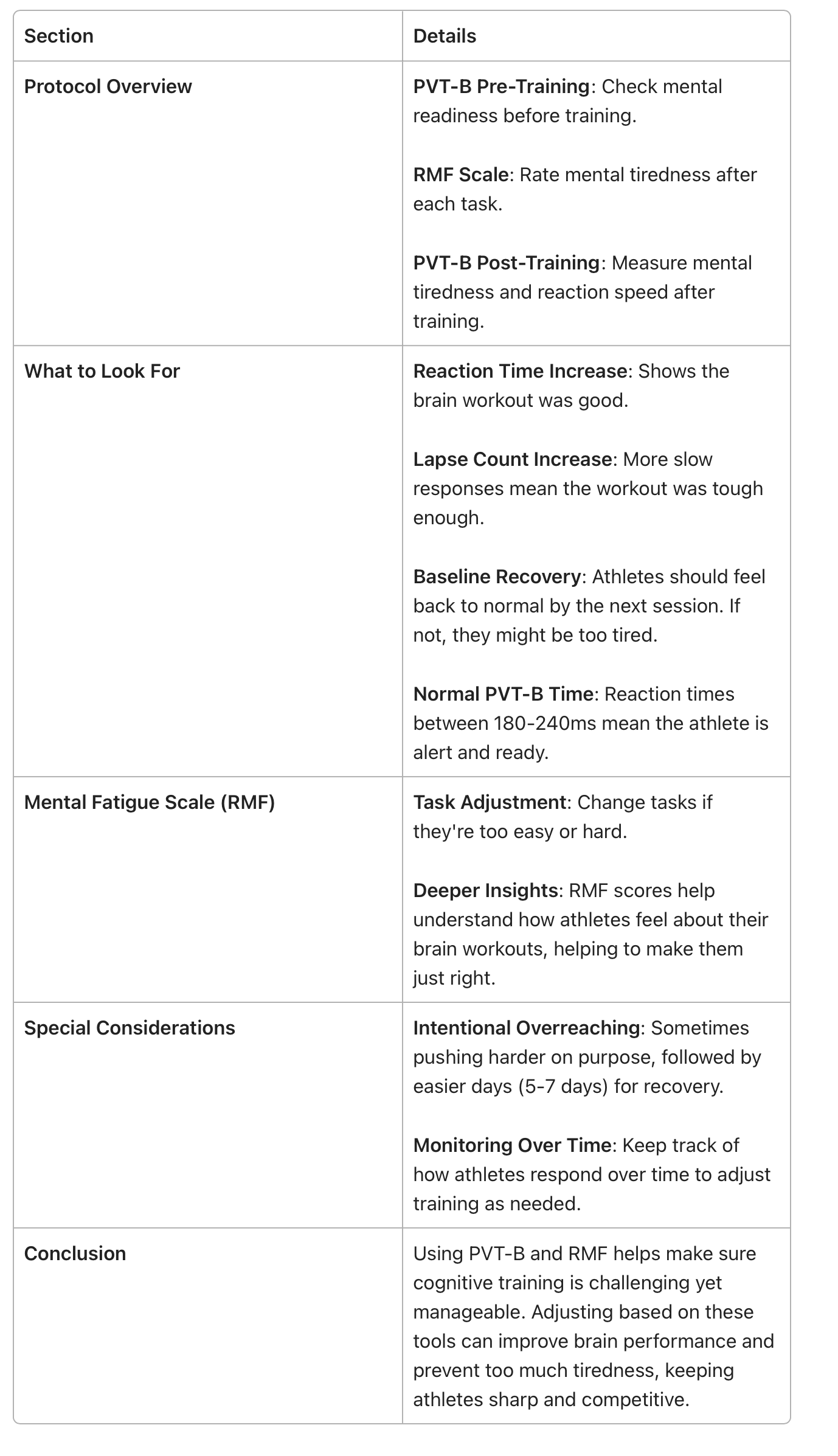Mental Fatigue Monitoring Protocol
Monitoring mental fatigue is crucial for optimizing cognitive training, ensuring athletes are adequately challenged without being overloaded.

Monitoring mental fatigue is crucial for optimizing cognitive training, ensuring athletes are adequately challenged without being overloaded. This guide outlines a simple protocol using the Psychomotor Vigilance Task - Brief (PVT-B) and the Rating of Mental Fatigue (RMF) scale within the Soma Analytics plan builder.
Protocol Overview
- PVT-B Test Pre-Training: Administer the PVT-B test before starting any cognitive training session. This initial measurement provides a baseline for the athlete's current mental fatigue level.
- Rating of Mental Fatigue Scale (RMF): Implement the RMF scale at the end of each task in the training session. This scale allows athletes to rate their perceived level of mental fatigue, providing valuable feedback on the cognitive load of each task.
- PVT-B Test Post-Training: Conduct the PVT-B test after completing all cognitive tasks for the session. This post-training measurement helps to assess the immediate impact of the session on the athlete's mental fatigue and reaction time.
What to Look For
- Increase in Reaction Time: A noticeable increase in reaction time post-training indicates an adequate cognitive load was applied during the session. This is a normal and expected outcome if the training is effectively challenging the athlete's cognitive capacities.
- Lapse Count and Variation: An increase in lapse count (responses slower than 355ms) and variation in reaction times can also signify sufficient cognitive load. It's common to observe either or both increases in reaction time and lapse count.
- Baseline Recovery: Athletes' reaction times should return to their baseline or close to it by the next training session. A significant increase in reaction time in any subsequent day’s pre-training PVT-B test may suggest the athlete is still mentally fatigued, indicating a need for adjusted cognitive load or recovery time.
- Normal PVT-B Reaction Time: Typical reaction times for PVT-B range between 180-240ms. Reaction times within this range indicate a normal level of alertness and cognitive readiness.
Mental Fatigue Scale (RMF)
The RMF scale is a critical tool for gauging how challenging an athlete finds a specific task. Utilize this scale to fine-tune your training program:
- Task Adjustment: If certain tasks are consistently rated as too easy or too hard, consider altering the task's placement within the session, adjusting the mode, or modifying the task's intensity or duration.
- Deeper Insights: The RMF scale provides deeper insights into the athlete's perception of cognitive load, helping you tailor the cognitive training program to their individual needs and recovery rates.
Special Considerations
- Intentional Overreaching: If you decide to implement a phase of intentional overreaching to push cognitive boundaries, ensure it is followed by a 5-7 day period of reduced cognitive load to allow for adequate recovery.
- Monitoring Over Time: Establish each athlete's baseline reaction time and mental fatigue levels through consistent monitoring. This longitudinal data is invaluable for adjusting training intensity and ensuring optimal cognitive load across training cycles.
Conclusion
This Mental Fatigue Monitoring Protocol leverages the PVT-B test and RMF scale to ensure athletes are receiving cognitive training that is both challenging and manageable. By carefully monitoring and adjusting based on these metrics, coaches can optimize cognitive load, enhance cognitive performance, and prevent overtraining, ensuring athletes remain competitive and mentally sharp.

🌐 Connect With Us
🌍 Soma Technologies: Engineered to enhance human performance.
📸 Instagram: Dive into our world through exclusive photos and stories.
👥 Facebook: Join our community for the latest updates and discussions.
📈 LinkedIn: Connect with us professionally and stay informed about industry news.
🎥 YouTube: Watch our latest videos, tutorials.
🐦 X: Follow us for instant updates, news, and engaging tweets.
